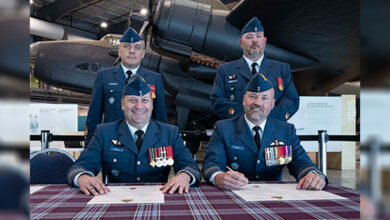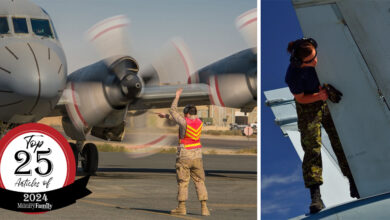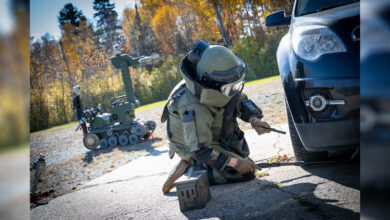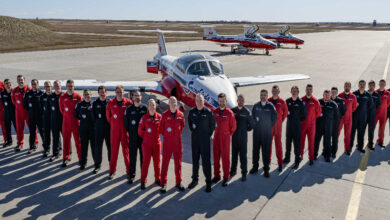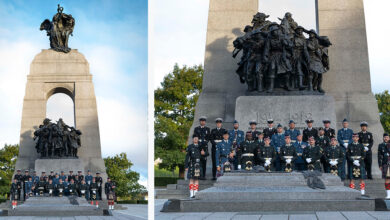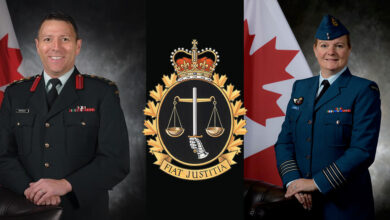Duty CallsUncategorized
Flight Safety report released on crash at 15 Wing Moose Jaw
A combination of weather and pressure to graduate more pilots were significant factors behind a plane crash at 15 Wing Moose Jaw, Saskatchewan on June 24, 2014, according to a report recently released by the Directorate of Flight Safety (DFS).
The accident took place when a qualified flying instructor (QFI) took a student pilot on a CT156 Harvard II for an advanced cleared training sortie. The aircraft experienced a hard landing upon completion of a practiced forced landing, causing damage to the Harvard. Supported by the 15 Wing Commander the QFI decided the safest approach was a controlled ejection, rather than attempting to safely land the aircraft. The pilot and student received minor injuries while the aircraft was destroyed upon crashing.
The report notes that a significant contributing factor to the accident is the Canadian Forces Flying Training School’s requirement to graduate 125 pilots per year. Since poor weather often leads to reduced flying missions, student missions were prioritized, giving QFI’s and pilots less time to maintain their skills.
“Specifically, 15 Wing & 2 CFFTS leadership saw a need to maximize pilot production with the available sorties. This occurred at the expense of ensuring pilot skills development and QFI proficiency,” stated the report.
The school’s training plan was revised in 2012 to ensure that more pilots graduated. The training plan reduced the number of flying missions causing a reduction in the experience of new pilots. A fact recognized by Col. Steve Charpentier, the director of flight safety with the Department of National Defence.
“There exists a delicate balance between quantity and quality when setting course standards, and that balance has cycled in both directions over the many years that the RCAF’s pilot training system has existed. Attempts to do more with less in the current context of continuous operational and financial optimum efficiencies have routinely been made, in the RCAF as well as throughout society. However, there will typically always be some level of compromise in quality if or when quantity becomes the focus,” said Charpentier in the report.
The report notes that other factors that day went into causing the accident, including the weather. The DFS notes that there were strong winds that day which may have lead to the initial hard landing, which subsequently caused damage to the plane.
Changes in rules have been made since the accident in 2014 for conducting practice landings during windy conditions and landing planes with the flaps down, which the report states is another contributing factor to the accident.
However, the larger issue, as stressed by Charpentier, is the need to ensure that new graduates are properly trained.
“Manning and experience levels of aircrew within the RCAF are likely to continue to be low in coming years, or at the very least less than what we were used to seeing some years ago. It is imperative that the leadership consider the potential impact this may have. RCAF commanders across each fleet of aircraft need to assess the performance of NWGs arriving at their units and address any concerns they may have with 2 Cdn Air Div,” said Charpentier.





